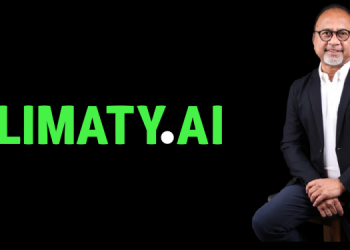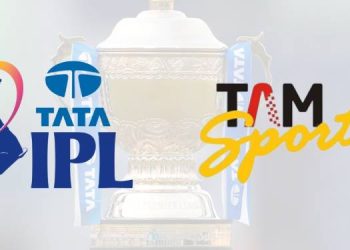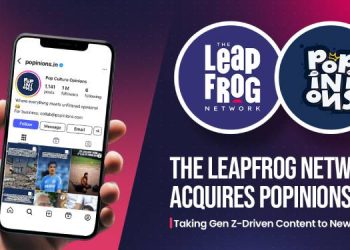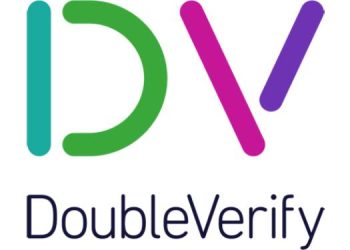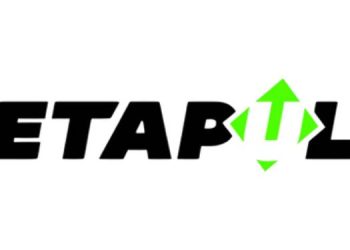Mumbai: Media fragmentation can fuel growth for audience-centric advertising.
- Many advertisers are seeking greater agility and cross-channel measurement capabilities.
- Scale of the open internet is prioritised over the convenience of walled gardens.
With programmatic ad revenue in India projected to soar to Rs 394 billion ($5.42 billion) by the year’s end, constituting a significant 44% of the total digital ad spend, the landscape is evolving at an unprecedented pace. In light of these transformative shifts, global advertising technology leader, The Trade Desk has released an industry report titled “Elevating your Digital Marketing Strategy with AI”.
Recommendations from advertising leaders:
- Set clear goals, KPIs, and realistic timelines to evaluate your programmatic and data strategy.
- Train teams to unlock the full potential of your chosen programmatic platform.
- Create a playbook of dos and don’ts for audience-led programmatic that fits your goals.
- Foster a mindset shift by assigning internal champions to lead adoption.
First Finding – Media fragmentation can fuel growth for audience-centric advertising: Consumers are spreading their time across the vast open internet, with a preference for premium ad-supported streaming platforms. The idea of a single platform being the go-to source for reaching your audience is rapidly fading. In India, people spend over half of their online time beyond search and social media networks. Today, we switch between watching our favourite shows on our smartphones or CTV, listening to music, and battling it out in online games.
While consumer’s habits have forever changed, adv budgets have not caught up. Only 15% of India’s ad spend is funnelled into the open internet, indicating a significant untapped opportunity for brands looking to connect with audiences where they spend their time.
Embracing the opportunity in fragmentation: With today’s diversity of content, sticking to PG – the conventional way of securing ad spots upfront with select media outlets or social media platforms – is no longer sufficient. And the media landscape isn’t getting any less complex. The smart move is to embrace change and do it quickly.
With audience-led programmatic advertising, brands can turn fragmentation into opportunities for connection, onversation, and conversion.
Anil Pandit EVP, head programmatic, data, and tech Publicis Media said, ” If you’re looking to layer multiple attributes, the best strategy is private marketplaces and open market. Unlike PG, they provide the control needed for precise targeting. The open market also helps you maximise outcomes when you have to achieve multiple KPIs.”
“Given the heavily fragmented nature of India’s media ecosystem, programmatic advertising is essential to reaching audiences effectively” said Om Jha head media strategies and partnerships Pepsi.
The taste of success: Pepsi reaches 12 million in audience-led cross-platform campaign
For its Slice fruit drinks campaign, Pepsi recognised the need for a fresh approach to make a significant impact. This involved working with their agency, Publicis Media India, to move beyond traditional linear TV advertising.. to a more targeted strategy, reaching audiences where they actively engage.
To achieve this, Pepsi harnessed its first-party data and leveraged third-party data segments on The Trade Desk to create a custom audience segment. Specifically, they targeted cord-cutters ages 18 to 34 who actively consume OTT content. By adopting this audience-centric strategy and combining it with The Trade Desk’s cross-device targeting solution, Pepsi was able to extend its reach across the various devices that consumers use, while optimising ad frequency for maximum impact.
Finding Two – Many advertisers are seeking greater agility and cross-channel mesurement capabilities: The programmatic landscape is adapting to advertiser calls for greater agility and the ability to measure ads across channels. These demands reflect the need for a more open and accountable advertising ecosystem.
Making sense of disparate ad metrics has long been a complicated task. Since tech giants and media companies each have their own way of tracking ad performance, it’s hard for advertisers to compare how their ads are performing across different platforms.
Now, advertising leaders are speaking out on the importance of having a panoramic view of ad performance across all the channels they invest in. Modern programmatic, an advancement from the conventional PG approach, empowers brands to assess and compare ad performance across different channels on the open internet such as news/websites, music streaming, OTT/CTV, and online gaming. In this way, advertisers can allocate budgets in a more effective manner for optimal outcomes.
“When it comes to PG, assessing ad performance is akin to students grading their own homework. I’d much prefer the objectivity of the open internet. The independence and transparency that come from external verification give credence to our success” said Arvind B Sainath head marketing effectiveness and media/digital planning Diageo
But it’s not just cross-channel measurement capabilities that advertisers want – they want it in real time. With audience-led programmatic advertising, advertisers possess the agility to swiftly adjust campaigns almost instantly by leveraging real-time data-driven insights derived from how their target audience is responding to the ads. This eliminates the need for brands to wait until the campaign has ended to gather insights on campaign performance. This newfound agility means being able to kick off or pause campaigns, adjust one’s spend, swap out ad creatives in a heartbeat, and finesse your messaging – all while a campaign is ongoing.
With this agility comes the ability to look forward. By collecting insights on how audiences are interacting with ads, a brand can plan its future strategy with confidence. This means making smarter, faster, data-driven decisions in brand-safe environments that can pay off in the long run.
As India increasingly wakes up to the potential of modern programmatic strategies, advertising leaders expect brands to back away from fixed-price deals made ahead of time in favour of a real-time, audience-led approach – where they can dynamically bid for ad spots based on how valuable they think it is to reach their target audience.
“Programmatic advertising has changed the way brands orchestrate their presence across display, video, mobile, and social media. This multi-channel approach ensures a cohesive brand experience that reflects the diverse preferences of the Indian consumer” said Shashidhar Sharma head of programmatic Group M
Finding Three – Scale of the open internet prioritised over convenience of walled gardens: Advertisers are starting to step out of their comfort zones, shifting their focus from the convenience of traditional advertising environments, like search and social media, to the fast-growing open internet. This modern approach to programmatic advertising is set to redefine media strategies.
Audience-led programmatic advertising expands access to online inventory that is beyond the reach of walled gardens. Large-scale campaigns that once took enormous effort to coordinate can now be rolled out rapidly.
600 million consumers in India are spending their time surfing the vast expanse of the open internet. That’s 62 million more than those who prefer to stay in the cosy corners of walled gardens like search and social media.
While some advertisers find comfort in the convenience of the PG approach, where ad deals are set in stone well ahead of time, there’s a fresh wave of understanding that brands don’t have to choose between the predictability of walled gardens and the potential scale and reach that await in the open internet.
The open internet versus walled gardens: The open internet is not controlled by any individual, business, or government body. It refers to online media properties (websites, platforms, and apps) across gaming, news, blogs, music, and OTT/CTV.
Walled gardens meanwhile are closed ecosystems that are controlled by a few tech giants. They own the content and media and have full control of the technology used to target, place, and measure ads. These include Google, YouTube, Facebook, Instagram, etc.
Savvy advertisers are already moving away from conventional direct programmatic deals toward modern programmatic advertising, where they have the freedom to tap in to the much larger and more diverse ad inventory that the open internet offers.
By leveraging every data point to determine the value of each ad impression, advertisers are ultimately purchasing only those impressions that reach their target audience. In doing so, brands can achieve more effective business outcomes through better precision and targeting.
“Programmatic advertising has transformed the way we launch large-scale campaigns. It allows us to
connect with a vast audience rapidly, bypassing the slower, traditional publisher-by-publisher approach” said Prabhvir Sahmey senior director Samsung Ads
The driving forces of modern programmatic: Projections indicate that global programmatic ad spend will likely reach $919 billion by 2027, and 84% of this spend will be transacted programmatically. Notably, India’s programmatic ad spend share grew 72% in the past five years (2019 to 2023) and is expected to encompass 44% of all digital ad spend in the country by the end of 2024
As the winds of change sweep across India’s programmatic landscape, advertising leaders predict three key drivers for the rapid adoption of audience-led programmatic advertising.
- New and premium inventory to spur programmatic momentum: Advertising leaders are increasingly excited as new media types, such as CTV, digital out-of-home, and retail media, integrate into the programmatic landscape. Anticipation is also mounting for the inclusion of highly sought-after premium inventory, such as live sports and digital billboards, within the programmatic realm. This new ad inventory can create a broader spectrum of programmatic options for advertisers, providing them with unmatched accuracy in connecting with diverse audiences.
- Quality data: The cornerstone of modern programmatic advertising: Success in programmatic hinges on quality data. As we transition into an era of consent-based marketing, advertising leaders emphasise the pivotal role of data in unlocking the full potential of programmatic advertising.Today, advertisers have a treasure trove of data at their disposal – from leveraging their very own first-party data to utilising top-quality data marketplaces. By harnessing these resources, brands can discover new potential customers and reconnect with existing ones in more meaningful ways, which can ultimately help boost media ROI.
- AI advancements to catalyse programmatic innovation: The integration of AI into ad tech has granted advertisers insights and capabilities once unimaginable. Brands that embrace these advancements will gain a competitive edge, benefiting from agility and deeper analytical acumen. Whether it’s through real-time bidding precision, dynamic ad creation, or predictive analytics for audience behaviours, the relentless progress of AI promises a continuous stream of new innovations that will only entice more brands to pivot towards audience-led programmatic advertising.


